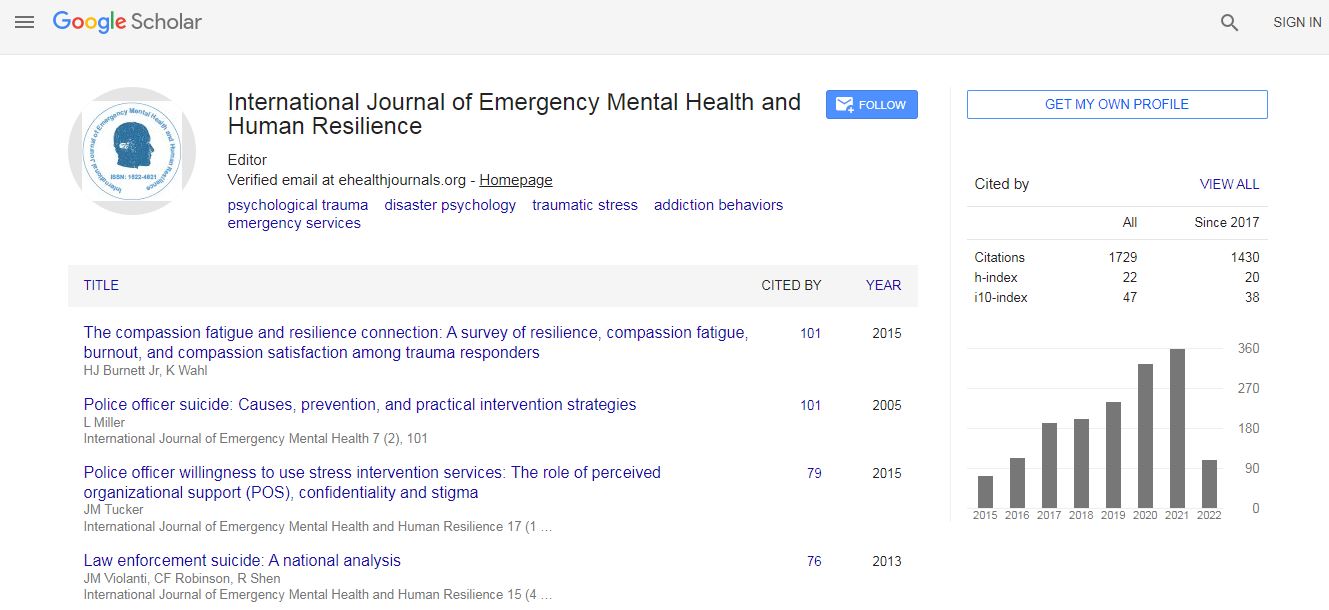Case Report
At-Risk EMS Employees: A Model of Assessment and Intervention
Peter Taillac, Ron Hammond*, Kate Miller
Department of Behavioral Science, University of Utah and Utah Valley University, USA
Emergency Medicine, University of Utah and Utah Valley University, USA
Abstract
This paper includes data results from a survey of Utah (U.S.) EMS (Emergency Medical Services) personnel. Those who reported having already reach a point of wanting to quit the field and having reached a point of wanting to resign their current position were classified as being ?At Risk? (N = 142) and were compared to those who had not (N = 395). T-Test and ratio analysis indicated that that ?At Risk? were found to have significantly higher incidences of difficult past calls, PTSD-like symptoms, and a variety of personal hardships. Both groups had relatively high indicators of negative impact of working in the EMS field on their relationships, life satisfaction, and positive job outlook. Arguments are made for implementing a posttraumatic growth model that builds on the Critical Incident Stress Management (CISM) debriefing model and that provides preventative rather than reparative intervention efforts to EMS personnel.

 Spanish
Spanish  Chinese
Chinese  Russian
Russian  German
German  French
French  Japanese
Japanese  Portuguese
Portuguese  Hindi
Hindi 